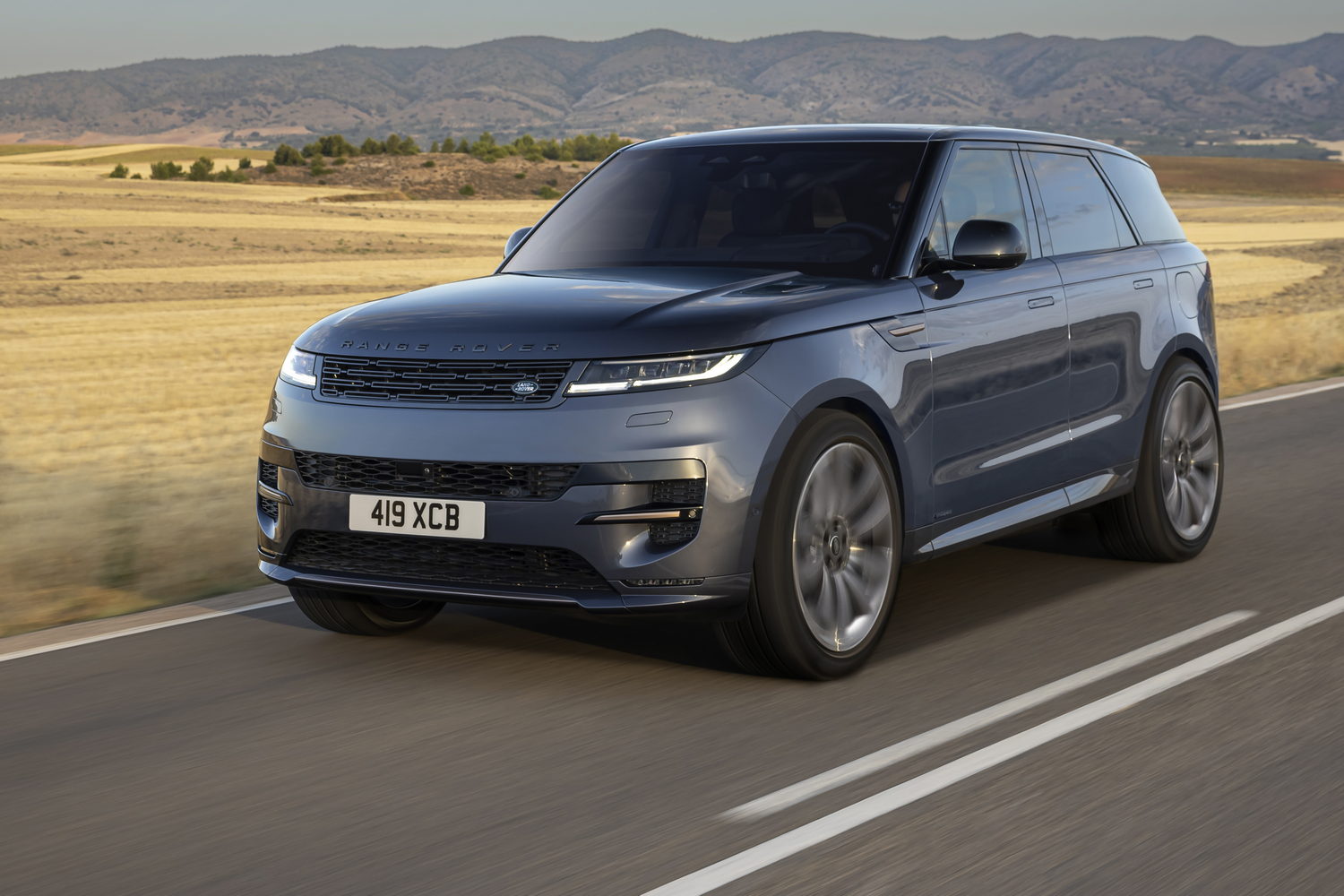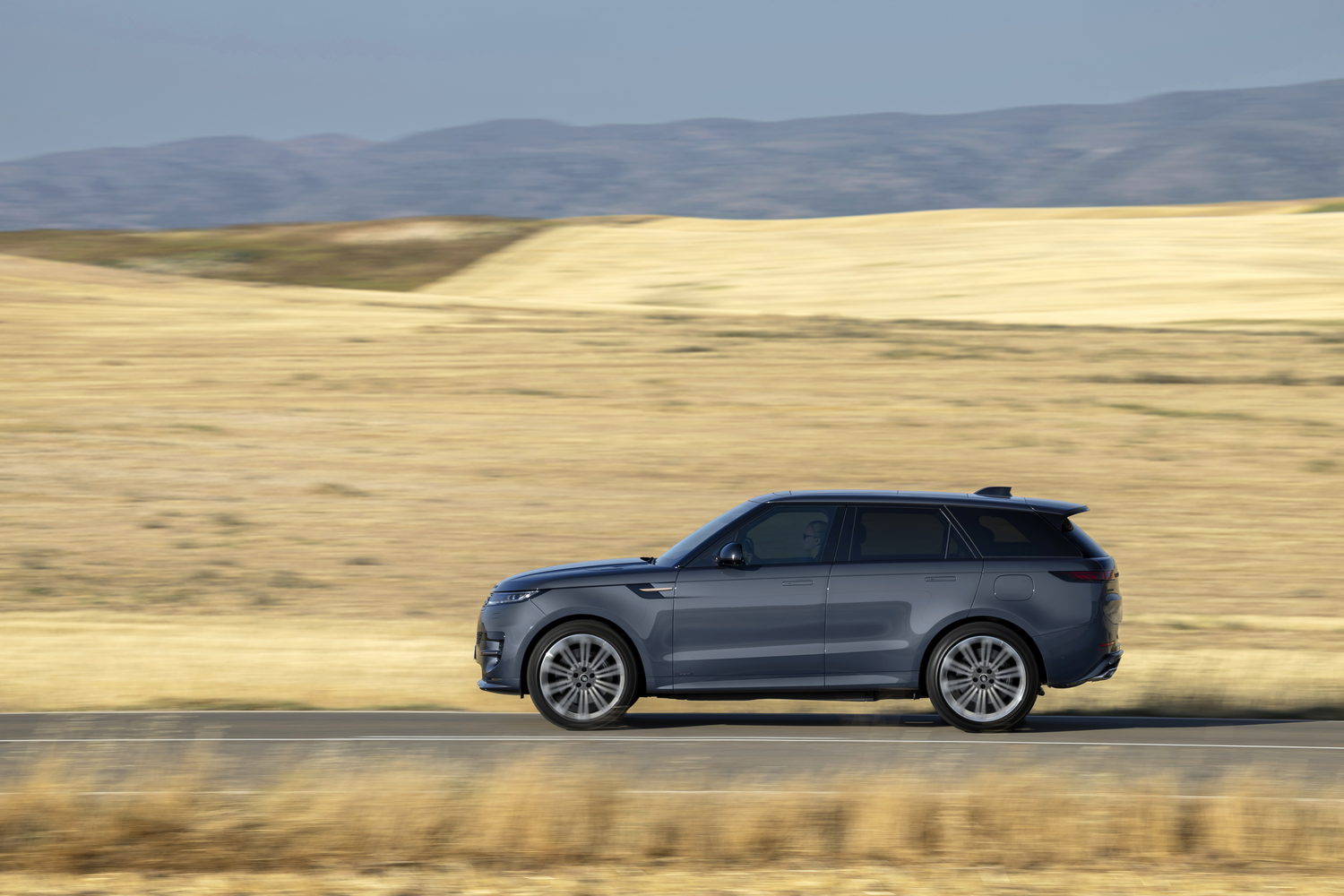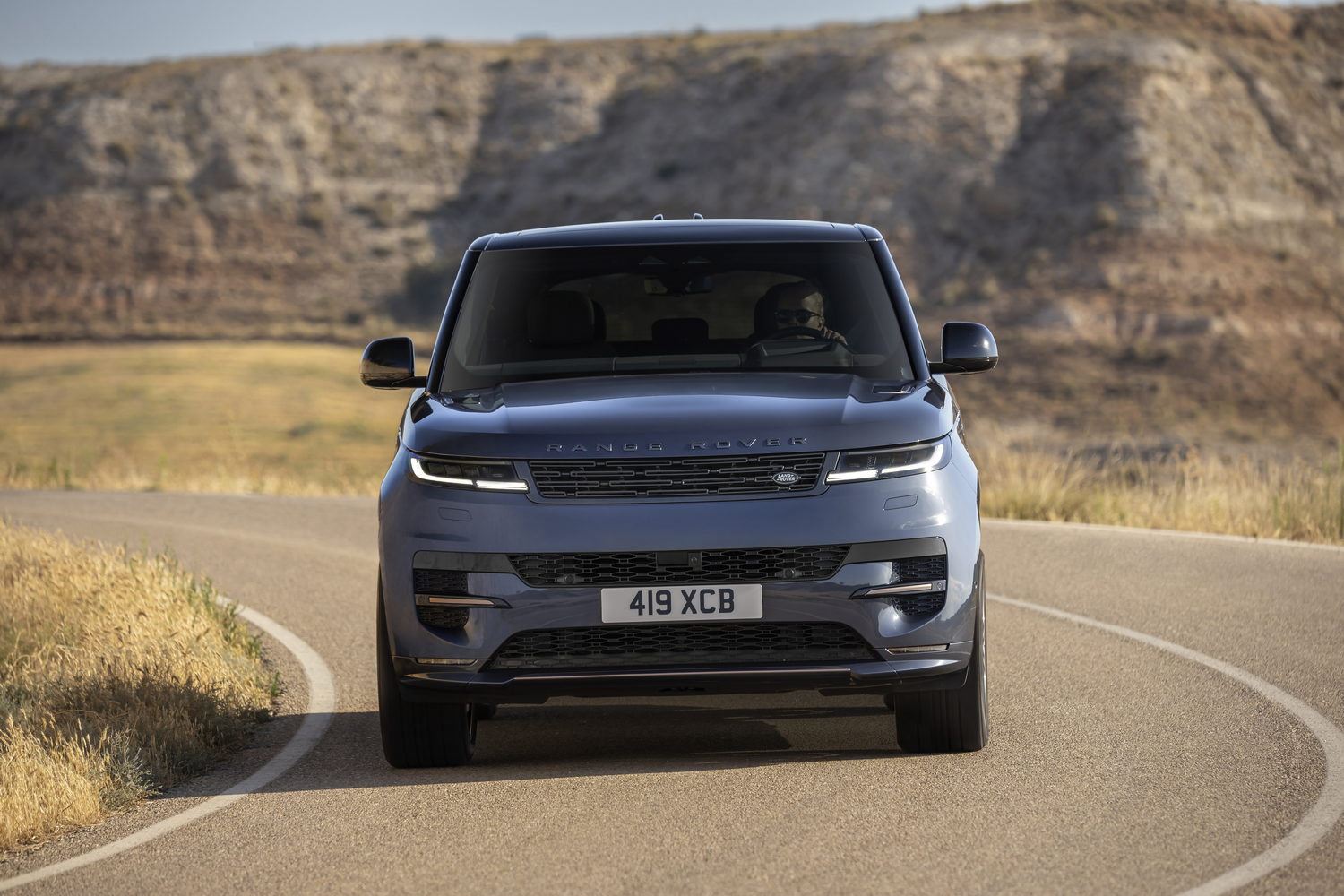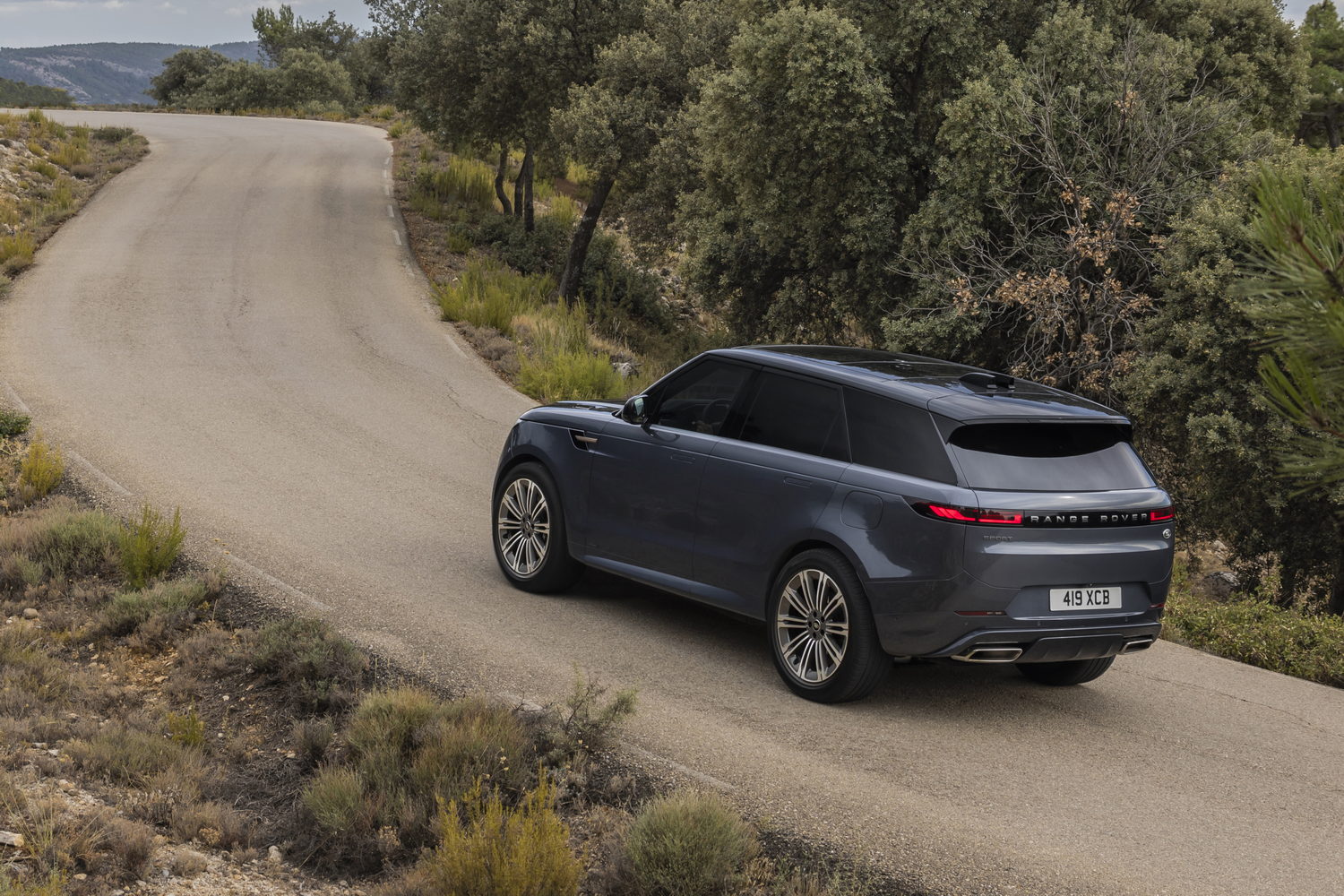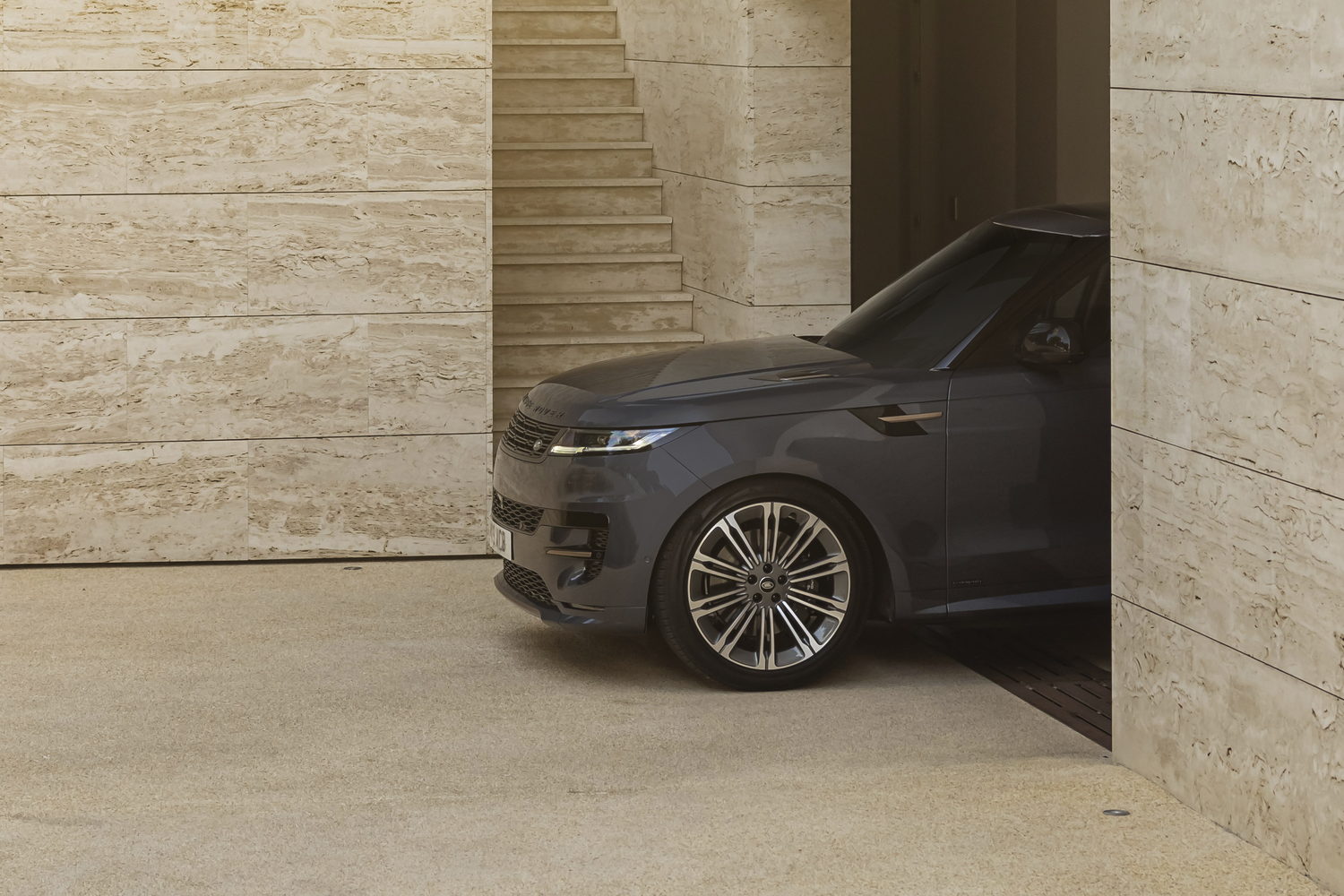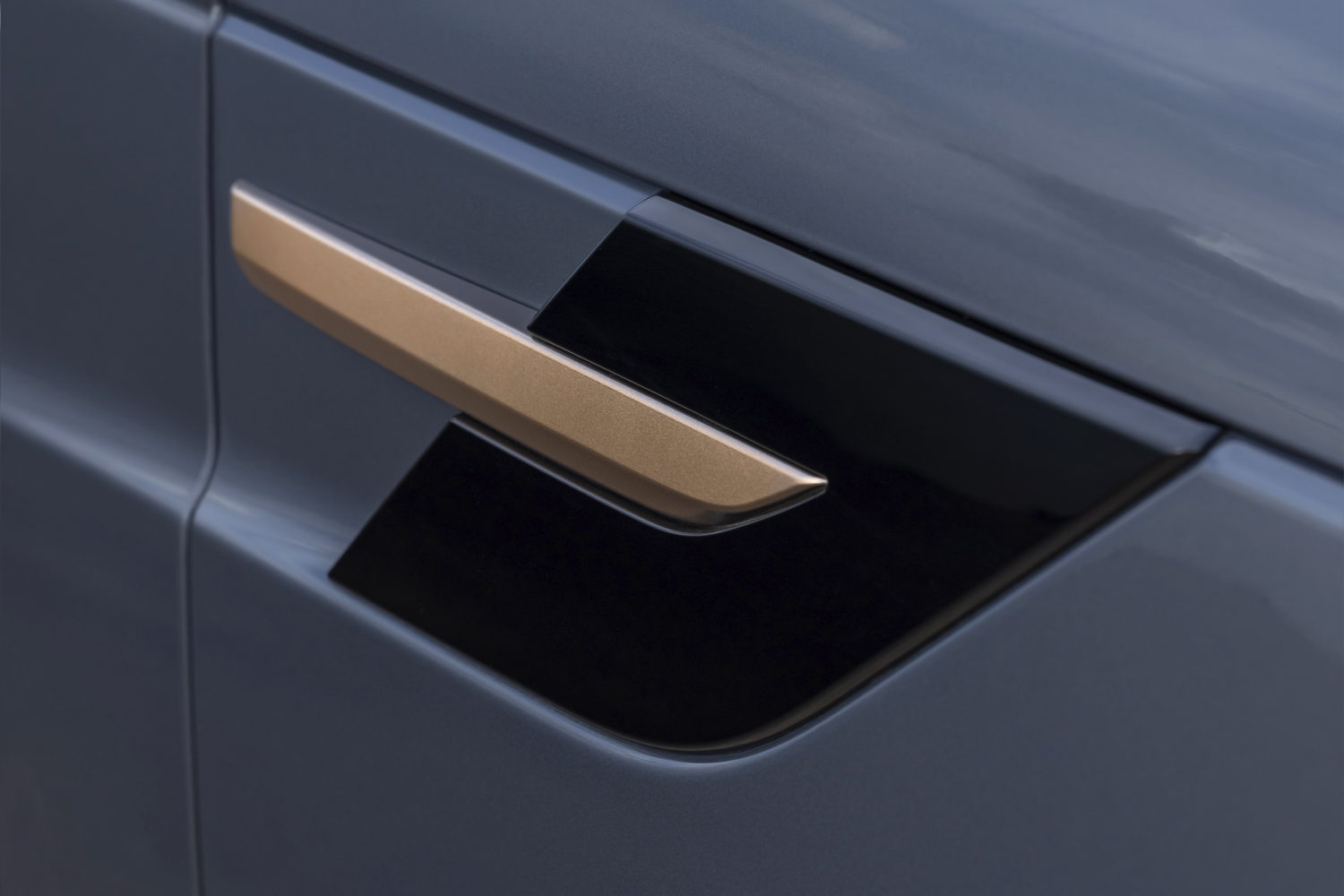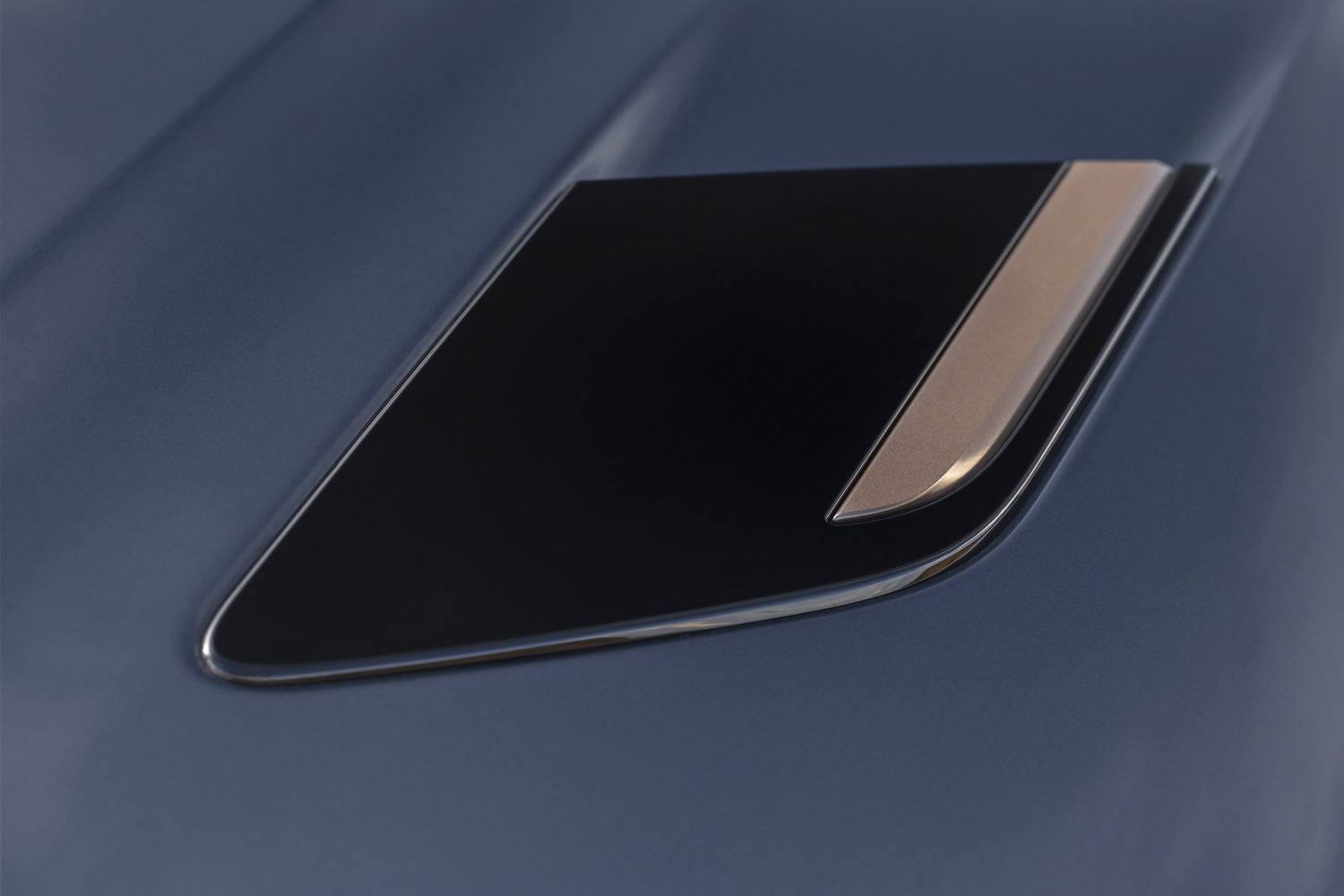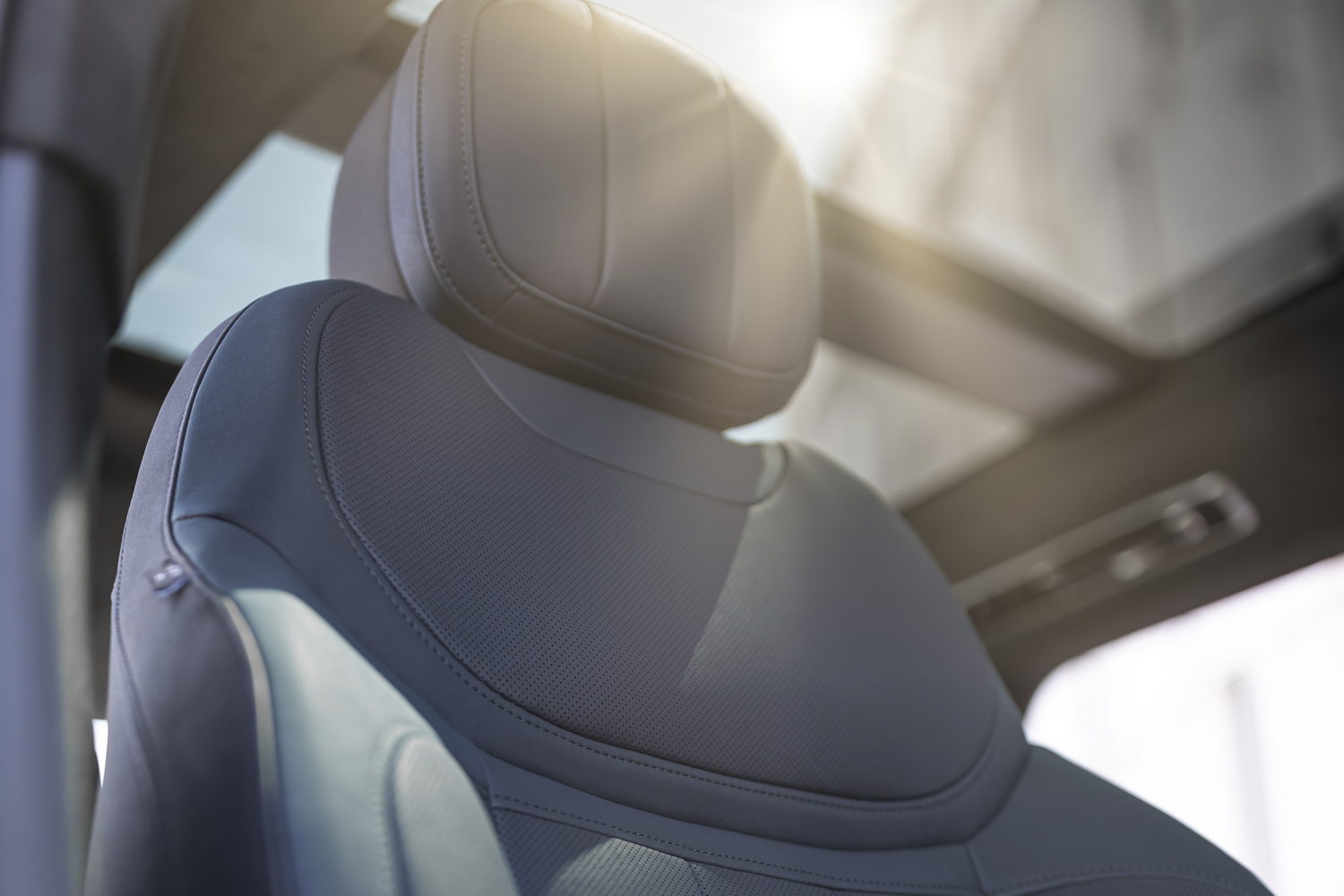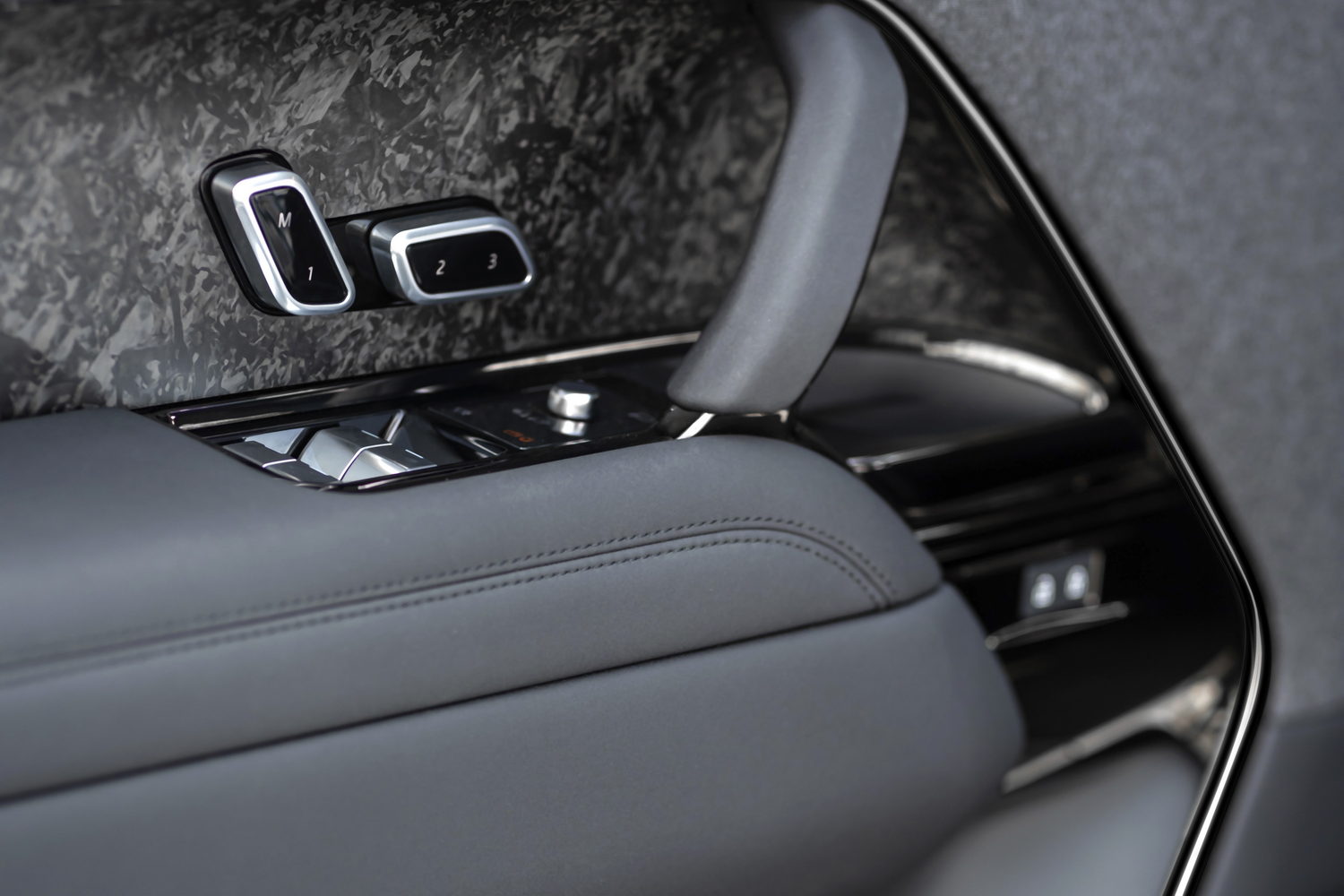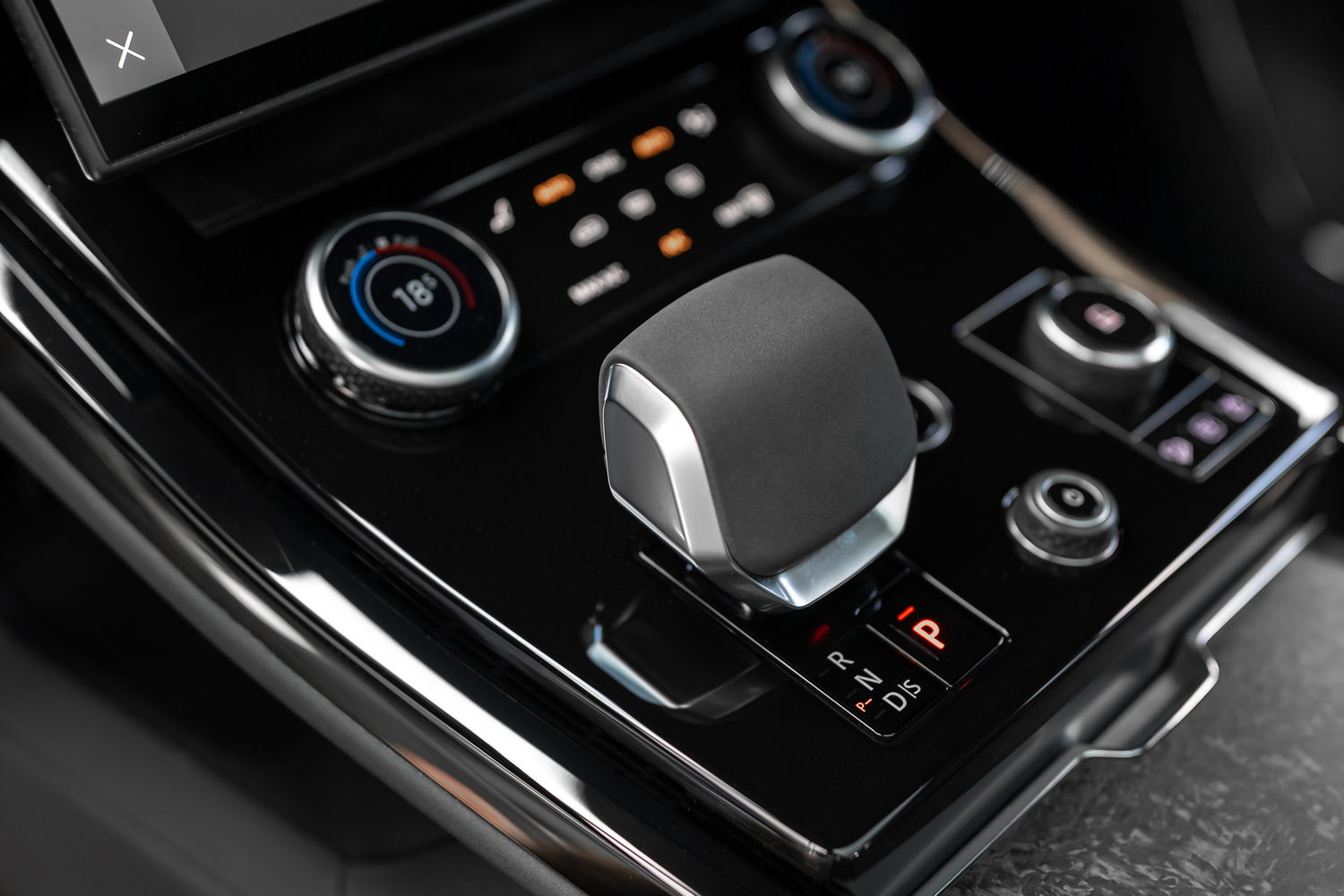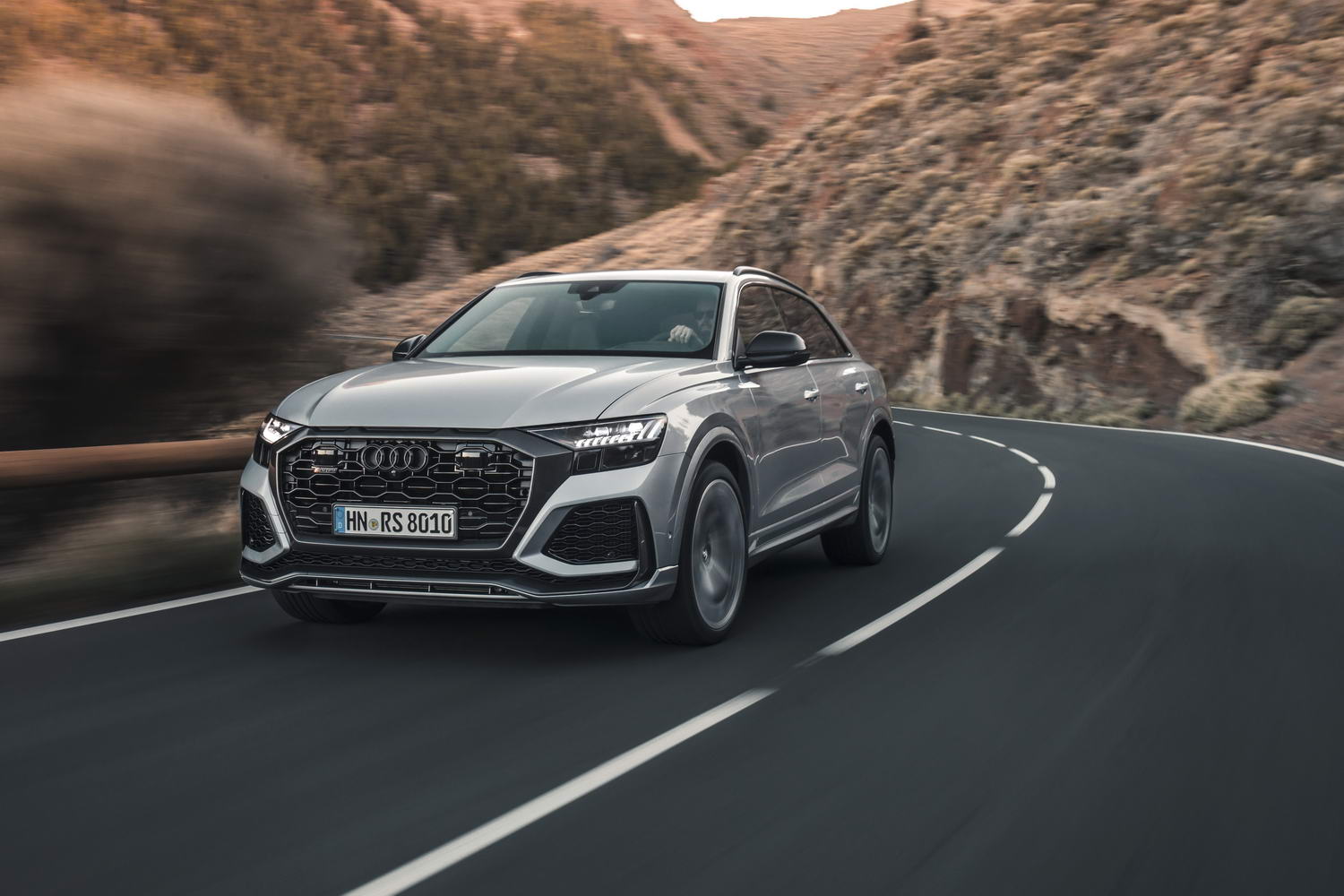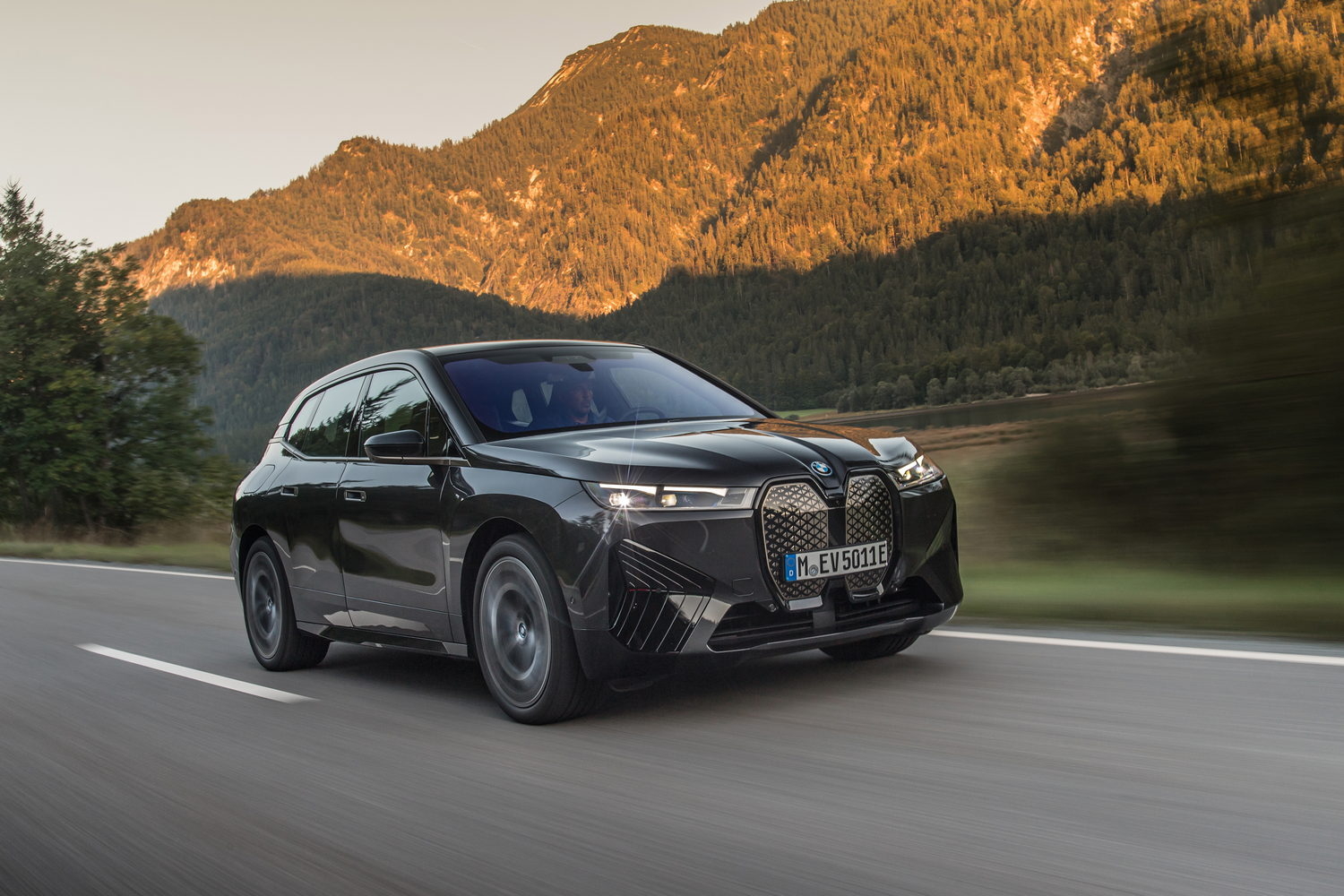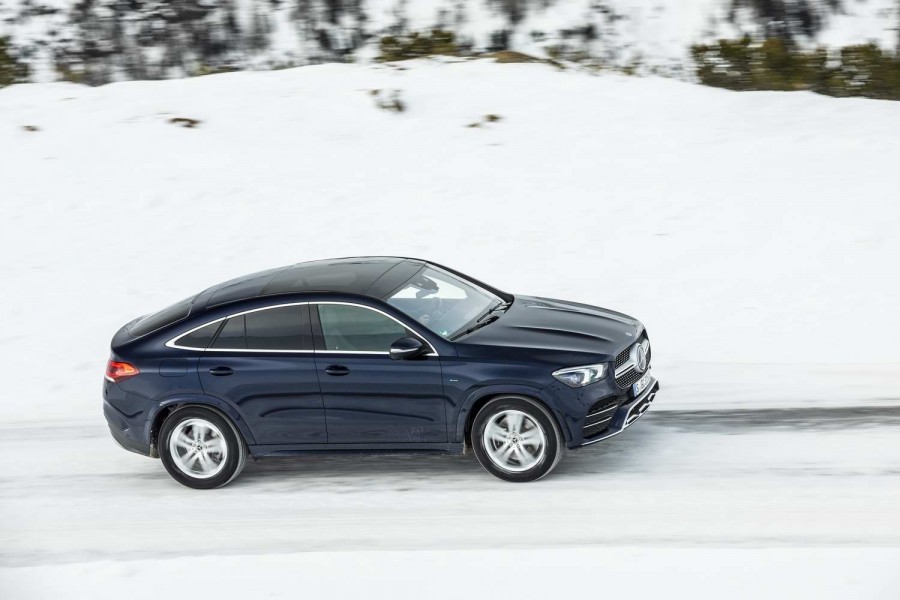While the Range Rover Sport may not have the haughty grandeur of the bigger model, it's still massively practical and notably sharper to drive than the full-fat Range Rover. The plug-in hybrid model has a huge breadth of ability, too.
In the metal
It will come as no surprise that Land Rover hasn't altered the Range Rover Sport's styling all that much for this third-generation model. The previous versions have achieved massive sales success for the brand, so why change a good thing? The stylists have cleaned up the lines a little, bringing in influences from the smaller Velar and Evoque, but the Range Rover Sport remains much as it ever has been - handsome and muscular, and without the styling excesses of some of its German rivals.
The biggest changes come at the rear, where the vertical taillights of the old model, and the new Range Rover, are replaced by supposedly-sportier-looking horizontal lights, separated by a large black band with the Range Rover name picked out. To these eyes it's not as successful a look as that of the larger Range Rover, but it's still hard to call it anything but attractive. The bigger change is in the boot, where you'll no longer find extra folding seats - there will be no seven-seat version of this Range Rover Sport, which makes you wonder if it will be as successful as the previous version, which certainly had an added appeal to well-heeled families.
The rest of the cabin is as-per the new Range Rover. The same pared-back, minimal-buttons styling, the same 13-inch screens for the (very impressive) infotainment and (fractionally less impressive) digital instruments and the same lush leather and wood trims. The centre console on our well-specced Autobiography test car included a fridge built in under the armrest and cupholders that slide back to reveal a vast storage space beneath (not to mention more USB sockets than you can shake an iPhone cable at).
Front-seat comfort is outrageously good, and overall quality - bar one or two cheap plastic components - seems in keeping with the six-figure price tag. Space in the back is excellent as well. The Range Rover Sport shares a 2.9-metre wheelbase with the larger, standard-wheelbase, Range Rover, so there's very little difference between the two when it comes to outright rear-seat space. You do notice that the roof is lower (it's 50mm lower than that of the Range Rover), but even with a panoramic glass roof fitted, it's hard to imagine anyone feeling cramped back there.
Loaded to the roof, Land Rover quotes 835 litres for boot volume with the seats up. Load it to the luggage cover and you're probably looking at around 650 litres - enough to be competitive within its class.
Driving it
The Range Rover Sport hybrid weighs the same 2.8 tonnes as the larger Range Rover PHEV, uses the same hybrid engine and battery and is mere millimetres different in its dimensions. So you'd expect it to drive basically the same. But it doesn't.
There is a weight difference, of around 80kg. Normally, that would be a lot but in terms of the overall kerb weight it's a drop in the ocean. The real difference is in the suspension. The larger Range Rover uses single-chamber air springs, tuned for ride comfort rather than handling. The Sport uses a new twin-chamber setup, twinned with bespoke adaptive dampers made for the car by Bilstein. The twin-chamber system is designed to act, for air suspension, rather in the manner that magnetic ride dampers act for conventional suspension systems. They can stiffen up more, and more quickly, than a single-chamber system, and so in theory give the Sport greater agility than the bigger Range Rover.
Actually, not in theory - in reality. Clearly, the two cars share a common DNA when it comes to how they drive, characterised by the same smooth, friction-free steering, the same well-controlled body movements as you enter a corner and the same sense of effortless gliding when cruising along a smooth motorway. But the Sport's steering is noticeably weightier than that of the Range Rover, and the bluff nose turns into fast corners with palpably greater speed. The Dynamic Response Pro active anti-roll system works better in the Sport too, especially if you twiddle the Terrain Response knob to Dynamic mode. Hydraulic rams press down on the suspension with up to 1,400Nm of torque, helping to keep the body level under fast cornering, allowing just enough roll to remind you that you're trying hard. The car's agility is, frankly, ridiculous for something this big, this heavy, this luxurious. It's not quite a match for the outright sportiness of a Porsche Cayenne, but it's not far off.
It's not quite smooth enough though. At least, it's not if you've ticked the box for the massive 23-inch wheels fitted to our test car. They look great, but they induce too much bump-thump on anything other than a perfect surface, which is a shame given that the car's primary ride is so good.
Refinement is excellent too, thanks in part to a noise-cancelling speaker system built into the seat headrests. The only noise you'll hear at a cruise is a fairly gentle rustle of air moving around the generously-sized door mirrors.
What about the hybrid performance, though? As with the Range Rover, you can have the Sport PHEV in two versions - a basic P440e version, or the same 3.0-litre straight-six plus 105kW electric motor combo tuned up to 510hp and 700Nm of torque for the P510e featured here. It's a really quick car, this. Against the clock, it's a second slower than the petrol-only V8 to 100km/h (the hybrid takes 5.4 seconds), but on the road the V8's advantage is pretty pointless. This is as fast as you could possibly want an SUV to go, and when you gun it the straight-six sounds almost as good as that mighty V8.
Far more important are its environmental credentials. A fully-electric Range Rover Sport is coming in 2024, but honestly, I'm already starting to wonder if this PHEV might still be the better all-rounder once the EV arrives. Over a 140km test route, that included a lengthy stretch of off-roading, we averaged 5.9 litres per 100km - remarkable fuel consumption for something this heavy and this powerful. Land Rover quotes a 113km range on a full charge of the 31.8kWh (net) battery, and a range of around 90km seems realistic as an everyday figure. As long as you can charge at home, you can probably do most of your Range Rover-ing under electric power, saving the petrol bit for longer runs. Even then, if you start with a fully-charged battery (as we did) you should do fine for fuel economy. With a totally flat battery, it uses around 9.1 litres per 100km, which is comparable to the 3.0-litre diesel model - and that can't go anywhere on full electric power. You can also fast-charge from public rapid chargers, at up to 50kW, but most will likely opt for home charging, which takes around five hours from a 7kW connection. The hybrid system uses geo-fencing, so if you put in a city-centre destination, it will automatically try to save enough electric power so that you can drive in town with zero emissions.
Under electric power, the Sport can still go off-road like a proper Range Rover. Dry conditions on our Spanish test drive meant that we weren't able to plug any mud, but it coped effortlessly with narrow, rock-strewn mountain trails, making full use of the clever 360-degree camera system to pick a safe route between a rock face on one side and a steep drop to a lake on the other. Most other cars would have lost at least one wheel or possibly a section of exhaust on that route. The Sport cruised through as if it were a tarmac road. And we didn't even need the engine...
What you get for your money
If a car with a €140,000-odd price tag can be called good value for money, then it's this one. For the price asked for this Autobiography model, you get four-zone climate control, the camera-based ClearSight rear-view mirror, the Dynamic Response Pro anti-roll system, 22-inch alloy wheels, 'image projection' LED headlights, a head-up display and semi-aniline leather seats with heating, cooling and massage.
That's not a whole lot for the extra €30,000 over the price of the P440e Dynamic SE model, but the interesting thing is the comparison to the larger Range Rover. For the same money as this P510e Autobiography Sport, you'd only get the base-model P440e Range Rover. Even given the extra level of desirability that comes with the larger model, I'd say that the Sport's general handsomeness and its sharper handling, not the mention the extra performance of this P510e model, bridge the gap pretty effectively.
Summary
Thanks to its hybrid powertrain, this version of the Range Rover Sport is unquestionably the pick of the line-up. It combines almost the same performance as the petrol V8 with the potential for startling fuel economy, even on longer journeys. And the ability to do most of your daily mileage on electric power. It's not even outrageously priced, especially if compared with the larger, mechanically identical, Range Rover. The all-electric version is going to have to work very hard to be as good an all-rounder as this.

